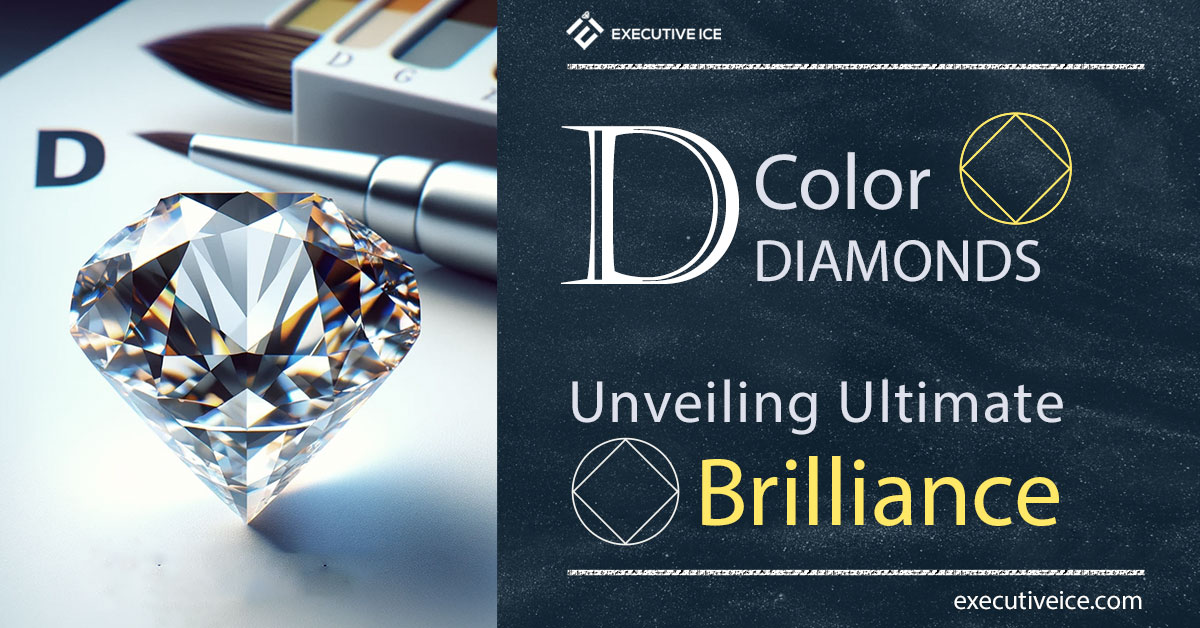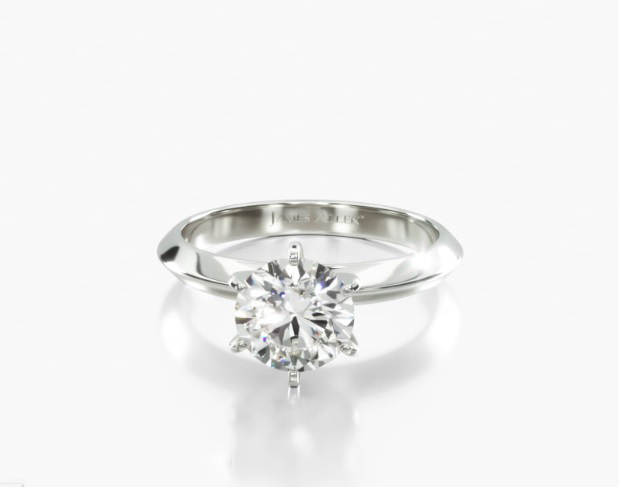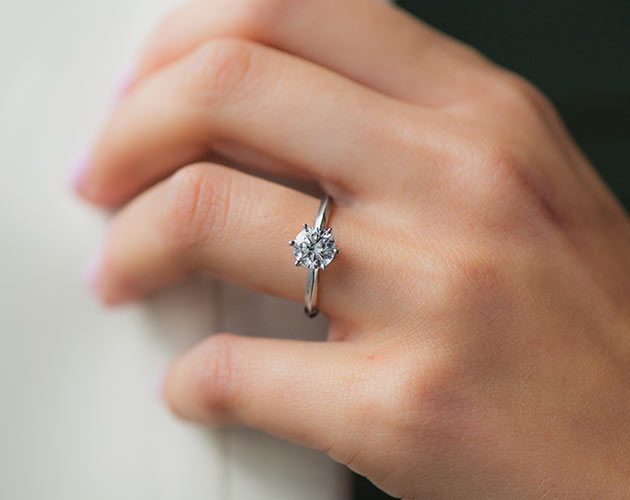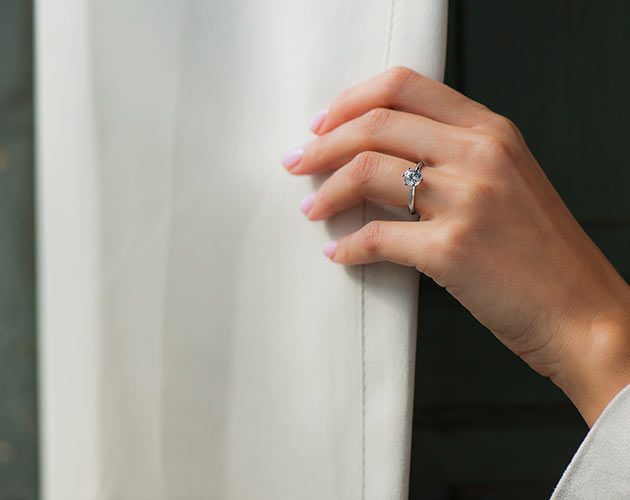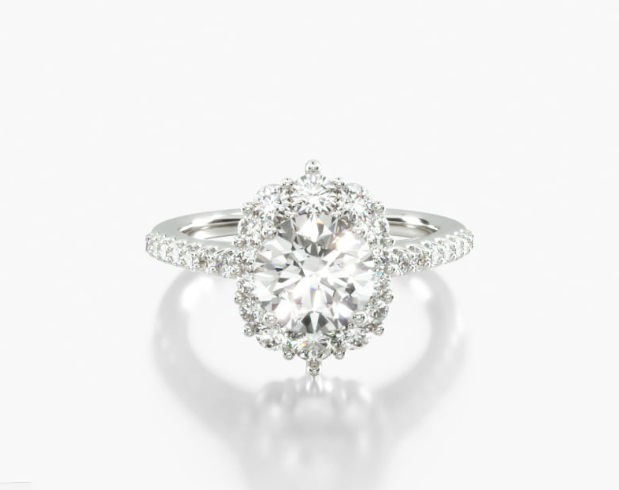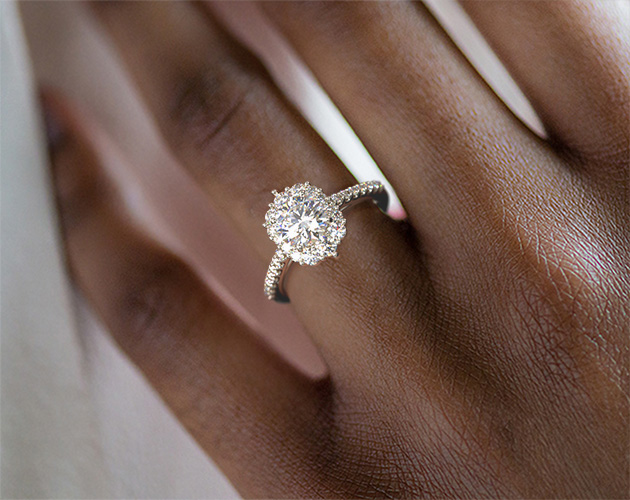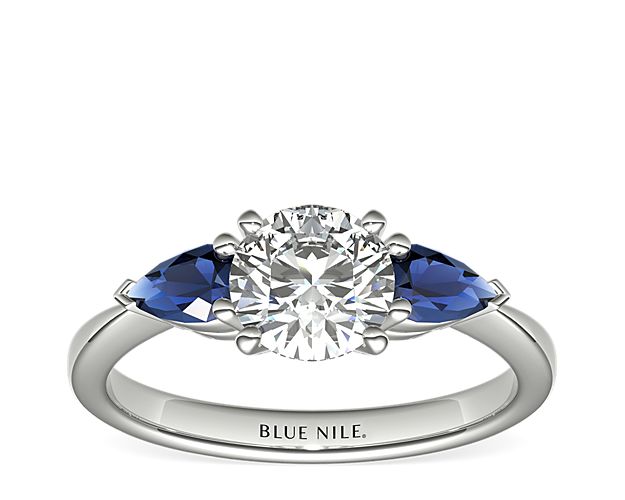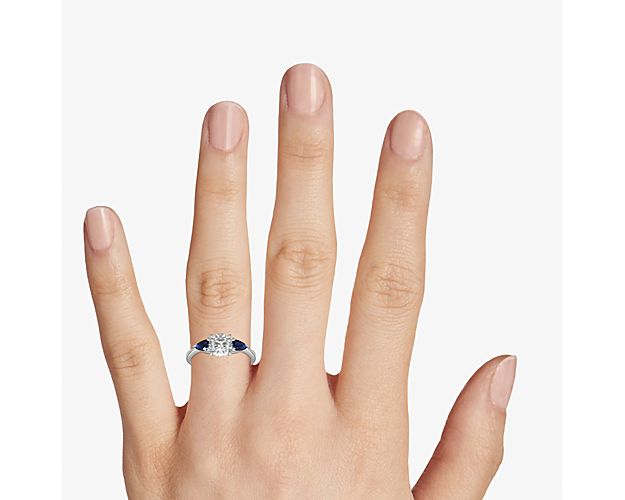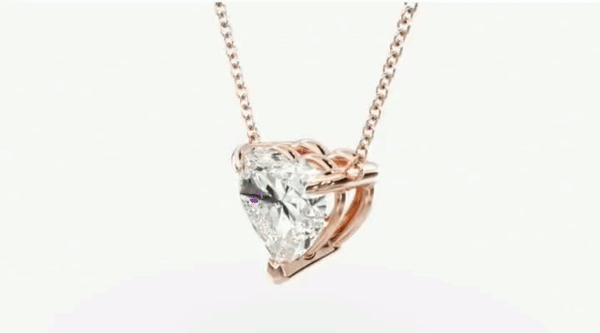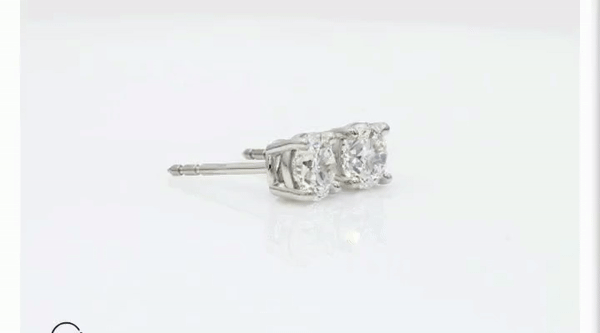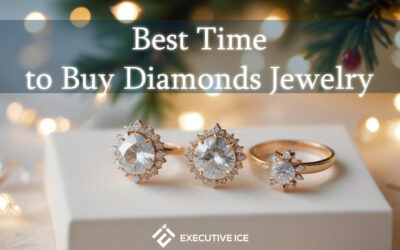D Color Diamonds represent the zenith of diamond color grades, symbolizing unparalleled purity and brilliance. In this comprehensive guide, we delve into the captivating world of these exceptional gems. You’ll gain insights into their unique characteristics, and how they stand out in the diamond color scale.
Whether you’re a diamond enthusiast, a prospective buyer, or simply curious about these rare beauties, this article offers valuable knowledge. Discover the allure of D Color Diamonds, understand their rarity and value, and learn how to choose the perfect D Color Diamond for your needs. Get ready to be fascinated by the world of these pristine and exquisite diamonds.
1. Introduction to D Color Diamonds
-
A brief overview of diamond color grading
D Color Diamonds sit at the very top of the diamond color grading scale, and understanding this scale is key to appreciating their exceptional value. In the world of diamonds, color grading is a critical aspect that determines both the beauty and the price of these precious stones. The grading system, developed by the Gemological Institute of America (GIA), ranges from D, which is absolutely colorless, to Z, where noticeable color is present.
As we delve into this fascinating topic, you’ll learn how expert gemologists assess diamond color and the subtle nuances that differentiate one grade from another. While D Color Diamonds are celebrated for their lack of color, each grade has its own charm and appeal. This understanding will not only enhance your appreciation of D Color Diamonds but also give you a solid foundation for exploring the wider world of diamonds. So, whether you’re in the market for a stunning engagement ring or just love learning about these sparkling treasures, you’re in the right place. Let’s get started on this sparkling journey!
-
The significance of D color in the diamond industry
D Color Diamonds holds a special place in the diamond industry, standing out as the epitome of perfection and desirability. In this industry, where every tiny detail matters, the absence of color in D Color Diamonds sets them apart as the most sought-after and prestigious choice. These gems are not just stones; they’re symbols of the highest quality and craftsmanship.
The significance of D Color Diamonds extends beyond their rarity. Their perfect color—or rather, the lack of it—makes them a favorite among jewelers and enthusiasts who seek the very best. When set in jewelry, these diamonds offer a level of brilliance and fire that is unmatched, making them a top pick for high-end, luxury pieces. The allure of D Color is about more than just aesthetics; it’s a testament to the skill and artistry that goes into diamond selection and jewelry making.
We’ll explore why D Color Diamonds are so highly valued in the diamond industry and what makes them a cut above the rest. Whether you’re a seasoned collector or new to the world of diamonds, understanding the significance of these exceptional stones will deepen your appreciation for one of nature’s most magnificent creations.
2. Understanding the Diamond Color Scale
-
Explanation of the GIA color grading scale
Alright, let’s talk about the GIA color grading scale, a real cornerstone in the diamond world. The Gemological Institute of America, or GIA for short, came up with this system, and it’s what folks in the diamond business use worldwide to tell the color of a diamond.
Now, picture this scale like a journey from ‘D’ all the way down to ‘Z’. Starting at ‘D’, these diamonds are as colorless as a drop of pure mountain water. This is where our D Color Diamonds sit, top of the line. As you move down the scale, each letter introduces just a hint more color, but it’s so subtle that it takes a well-trained eye to spot it.
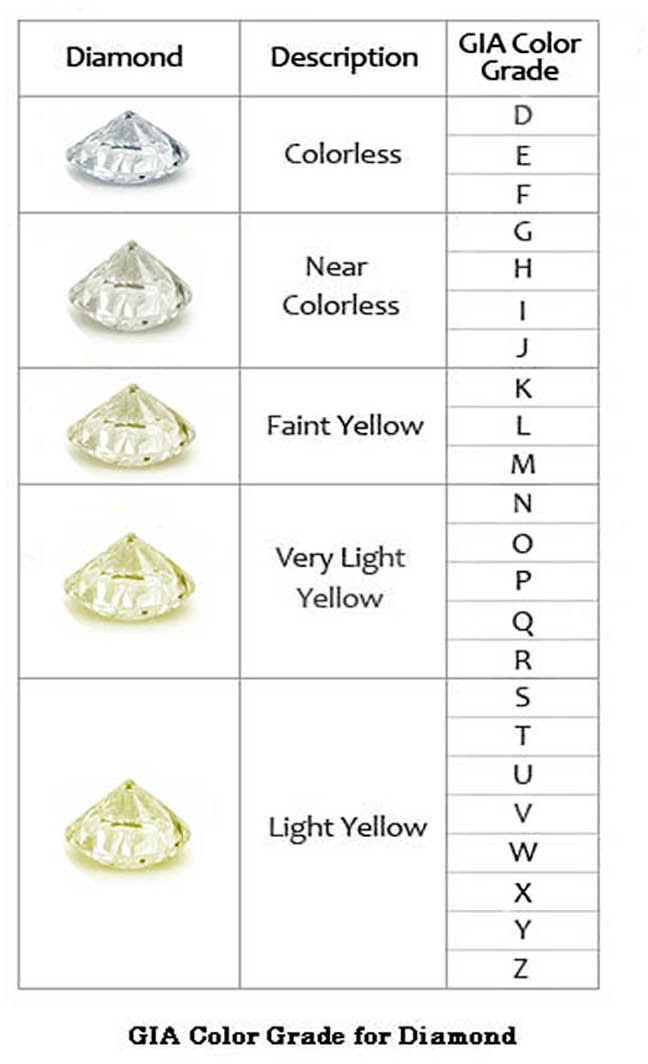
From ‘D’ to ‘J’, diamonds are considered colorless to near-colorless. That means they got just a whisper of color. ‘K’ to ‘M’ diamonds show a bit more color, and from ‘N’ to ‘Z’, that color becomes more noticeable. But remember, even with a bit of color, these diamonds can still be stunning.
This grading isn’t about good or bad; it’s about rarity and what you’re looking for in a diamond. D Color Diamonds are like finding a rare treasure because they’re so scarce and pure. But diamonds further down the scale have their own charm and are often loved for their warm tones.
So, when you’re looking at diamonds, keep this scale in mind. It’s your map to understanding what makes each diamond unique, especially those rare D Color beauties.
-
Positioning of D color within the scale and its uniqueness
Let’s take a closer look at where D Color Diamonds stand on that GIA scale and what makes them stand out like a shining star in the night sky.
Remember, ‘D’ is right at the top, and it’s where these diamonds get their name. They’re the cream of the crop, the creme de la creme. D Color means no color at all, pure as the driven snow. In fact, they’re so colorless that they’re like little prisms, just waiting to catch the light and dance with all the colors of the rainbow.
Now, what makes D Color Diamonds truly unique is their rarity. You see, as you move down the scale, diamonds with a bit more color become more common. But D Color Diamonds? They’re like finding a needle in a haystack. Only a tiny fraction of all diamonds mined are graded as ‘D’ color.
Here’s another look:
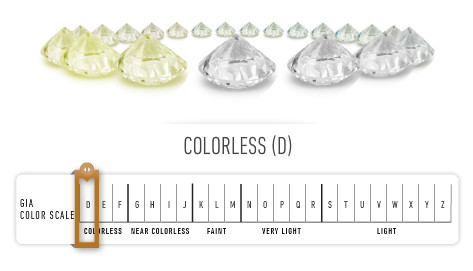
Their purity and rarity make them the top choice for those who want the best of the best. When set in jewelry, they shine with an unmatched brilliance, making them the crown jewels of any collection.
So, when you hear about D Color Diamonds, remember, that they’re not just colorless; they’re the most precious and dazzling diamonds you can find. A true wonder of nature!
3. Characteristics of D Color Diamonds
-
Visual qualities and attributes
Picture this: you’re holding a D Color Diamond in your hand, and it’s like holding a drop of pure sunlight. These diamonds are absolutely colorless, like a crystal-clear lake reflecting the sky. Take a look here👇

They’re so transparent that they act like little prisms, splitting light into all its glorious colors and sending them dancing. That’s what we call ‘fire’ in the diamond world, and D Color Diamonds have it in spades.
Now, when it comes to ‘brilliance,’ which is how diamonds sparkle, D Color Diamonds are champions. Their lack of color allows them to shine with unmatched brightness. They’re like stars in the night sky, twinkling with every movement.
And let’s not forget about ‘scintillation,’ which is all about those tiny flashes of light that happen when the diamond moves. D Color Diamonds have scintillation in abundance. They’re like nature’s disco ball, creating a dazzling display of sparkles.
So, when you look at a D Color Diamond, you’re not just seeing a gem; you’re witnessing a symphony of light and color. These diamonds are the epitome of purity and beauty, and their visual qualities are simply mesmerizing.
4. The Rarity and Value of D Color Diamonds
-
Statistical rarity in nature
You see, these diamonds are like hidden gems in the vast wilderness. Out of all the diamonds that are mined from deep within the Earth, only a tiny fraction earn that coveted ‘D’ grade for color. It’s like finding a rare flower blooming in the desert.
To put it in perspective, D Color Diamonds make up just a tiny percentage of all the diamonds out there. It’s as if you’re searching for a shooting star in the night sky. That’s why they’re often referred to as “investment-grade” diamonds because their scarcity makes them incredibly valuable.
So, when you hold a D Color Diamond, you’re not just holding a gem; you’re holding a piece of nature’s magic—a true rarity that’s been shaped over millions of years. It’s a testament to the Earth’s incredible forces and the artistry of time itself.
-
Impact on pricing and investment potential.
These diamonds are like precious treasures that appreciate over time. Their rarity makes them highly sought after by collectors and investors alike. When it comes to pricing, D Color Diamonds are at the top end of the scale. They command some of the highest prices in the market, akin to owning a masterpiece of art.
What makes them even more enticing is their investment potential. Over the years, D Color Diamonds have consistently shown the ability to retain and increase their value. It’s like owning a piece of history that only becomes more valuable with time.
So, if you’re considering a D Color Diamond, not only are you investing in a stunning piece of jewelry, but you’re also investing in something that can potentially grow in value, much like a rare artifact. It’s a testament to the enduring allure and worth of these remarkable gems.
Continue reading the article to explore the pricing of D color diamonds.
5. Choosing a D Color Diamond: What to Consider
-
Factors to look at beyond color (cut, clarity, carat)
Now, when it comes to choosing a D Color Diamond, there’s more to consider than just its color. Let’s explore the other factors that play a crucial role in finding the perfect diamond.
-
First, there’s the ‘cut’
Think of it as the diamond’s personality. The cut determines how it sparkles and shines. A well-cut diamond can make even the most colorless D Color Diamond dance with light. It’s like finding the perfect dance partner; they make every move graceful.
-
Next, we have ‘clarity’
which is all about the diamond’s inner world. It’s like peering into a clear mountain lake. The fewer imperfections or ‘inclusions’ a diamond has, the clearer and more valuable it becomes.
For more details about clarity, here is a simple, comprehensive guide to diamond clarity.
-
Then there’s ‘carat’
This is all about the size of the diamond. Bigger isn’t always better; it’s about what speaks to your heart. Some folks prefer a dainty gem, while others want a bold statement piece.
For a deeper understanding of the Diamond Carat
So, remember, when you’re on the hunt for a D Color Diamond, consider these other factors too. It’s like putting together a puzzle, and when everything fits just right, you’ll have a diamond that’s not only colorless but truly enchanting.
-
Balancing color with other characteristics for optimal value
While D Color Diamonds are prized for their absolute colorlessness, it’s essential to strike a balance with the other characteristics like cut, clarity, and carat to get the best value. It’s like crafting a beautiful story; each element should complement the other.
For instance, a well-cut D Color Diamond will shine brilliantly, even if it’s not the largest in size. Think of it like a small but captivating star in the night sky. And when the clarity is excellent, it’s like looking into a crystal-clear pond, revealing the diamond’s true beauty.
But here’s the thing—sometimes, a slightly lower carat weight can save you money without sacrificing much in terms of appearance. It’s like finding a hidden trail in the forest; it might lead to the same breathtaking view.
So, when you’re on the hunt for that perfect D Color Diamond, remember that it’s not just about the color. It’s about finding the right balance that speaks to your heart and wallet.
6. D Color Diamonds in Jewelry
-
Popular settings and styles
When it comes to settings, there are a few that really make D Color Diamonds stand out. One of the classics is the solitaire setting. It’s like framing a beautiful painting with a simple and elegant frame. This setting lets the D Color Diamond take center stage, and its colorless beauty truly captivates. To see it naturally, here’s what Solitaire setting looks like with D color diamond:
image source: James Allen
Observe its stunning appearance when worn on the finger:
image source: James Allen
Another popular choice is the halo setting. Imagine a gentle circle of diamonds surrounding the center D Color Diamond, like a crown of stars in the night sky. This style adds even more sparkle and brilliance to an already dazzling gem. To provide a more natural perspective, here’s how the Halo setting complements a D color diamond:
image source: James Allen
And let’s not forget about the timeless elegance of the three-stone setting. It’s like telling a story with diamonds—past, present, and future. A D Color Diamond in the center, flanked by two smaller stones, creates a beautiful narrative of love and commitment. For a true-to-life depiction, here’s how the three-stone setting appears with a D color diamond:
Image Source: Blue Nile
As for styles, D Color Diamonds can be found in all sorts of jewelry, from engagement rings to necklaces and earrings. They’re versatile and can elevate any piece to a whole new level of elegance.
So, when you’re thinking about adorning yourself or a loved one with a D Color Diamond, consider these popular settings and styles to make the beauty of the diamond truly shine.
-
How D color enhances different types of jewelry
Imagine an engagement ring with a D Color Diamond at its heart. It’s like a promise of pure love and a future as bright as the diamond itself. The colorless beauty of the diamond symbolizes the clarity of your commitment.
For necklaces, D Color Diamonds add a touch of elegance and sophistication. Whether it’s a pendant or a dazzling strand, they catch the light and create a mesmerizing sparkle around your neck. It’s like wearing a piece of the starry night sky.
For an authentic portrayal, here’s how necklaces appear with a diamond:
Image Source: James Allen
In earrings, D Color Diamonds frame your face with unmatched brilliance. They draw attention to your eyes and enhance your natural beauty. It’s like having two radiant stars on each ear, illuminating your presence.
Image Source: Blue Nile
And in bracelets, D Color Diamonds become a delicate and exquisite adornment, like dewdrops glistening in the morning sun. They add a touch of luxury to your wrist, making every gesture a statement of grace and beauty.
So, no matter the type of jewelry, D Color Diamonds elevate it to a level of pure elegance and charm. They’re not just gems; they’re reflections of your unique and timeless style.
7. Care and Maintenance of D Color Diamonds
-
Tips for preserving the color and brilliance
* First and foremost, keep your D Color Diamond clean. It’s like washing the dust off a beautiful gem. A gentle bath in warm soapy water and a soft brush will do the trick. Rinse it well and pat it dry with a soft, lint-free cloth.
** When storing your diamond, keep it separate from other jewelry. Diamonds can scratch other gems, and you wouldn’t want that beautiful D Color Diamond to lose its luster.
*** Avoid exposing your diamond to harsh chemicals. It’s like protecting a delicate flower from strong winds. Chemicals can dull the sparkle, so it’s best to remove your diamond jewelry when doing chores or using cleaning products.
By following these tips, you’ll ensure that your D Color Diamond continues to shine as brilliantly as the day you first laid eyes on it.
-
Professional care recommendations
Just like you’d trust a skilled guide to navigate the wilderness, it’s wise to trust a professional jeweler to care for your D Color Diamond. Regular visits to a jeweler ensure that your diamond remains secure in its setting, and any potential issues can be addressed promptly. It’s like visiting the doctor for a wellness check. They’ll make sure it’s secure in its setting and help keep it in top-notch condition.
* Consider getting your diamond professionally cleaned once in a while. It’s like giving it a spa day. Jewelers have special tools and solutions to clean your diamond thoroughly, restoring its brilliance.
** If your D Color Diamond is set in a ring, pay attention to the prongs that hold it in place. Over time, they can wear down or loosen. Having a jeweler inspect and tighten them as needed will keep your diamond safe and secure.
*** Lastly, ask your jeweler about getting your D Color Diamond certified. Certification by reputable organizations like the GIA provides documentation of its quality, which can be valuable for insurance purposes and future generations.
So, remember, professional care is like a shield that keeps your D Color Diamond pristine and ensures it remains a cherished treasure for years to come.
8. D Color Diamonds and Ethical Considerations
-
Sourcing and ethical implications
When it comes to sourcing these exquisite gems, it’s crucial to consider their origin. Some D Color Diamonds come from mines with ethical practices, ensuring fair wages and safe working conditions for miners. It’s like supporting a community that cares for its people and the environment.
On the other hand, there are diamonds known as conflict diamonds, which have been sourced from regions with unethical practices and used to fund conflicts. These diamonds have a dark history, and it’s essential to avoid them. It’s like choosing to walk the path of light rather than darkness.
So, when you’re looking for a D Color Diamond, inquire about its origin and ensure it comes from responsible sources. Supporting ethical practices not only ensures you have a beautiful gem but also a clear conscience, knowing that your diamond has a positive impact on the world.
-
Lab-grown vs. natural D color diamonds
Lab-grown diamonds are like seeds planted with care, nurtured to perfection in a controlled environment. They have the same stunning color as natural D Color Diamonds, and they’re often more affordable. Choosing lab-grown diamonds can be seen as a sustainable choice, as they require fewer environmental resources and avoid the ethical concerns associated with some natural diamonds.
On the other hand, natural D Color Diamonds are like treasures unearthed from the heart of the Earth. They hold a unique charm and the allure of being created by the forces of nature over millions of years. Their rarity and authenticity make them a symbol of luxury and timeless beauty.
So, when you’re deciding between lab-grown and natural D Color Diamonds, consider what matters most to you. Both options have their merits, and it’s all about finding the diamond that resonates with your values and preferences.
9. How Much Does a D Color Diamond Cost?
Diamond pricing is influenced by a multitude of factors, with the 4Cs (including color) being primary considerations. Additionally, less common but equally important factors like polish, symmetry, table, depth, and others play a role in determining the price of a diamond.
As a result, the cost of a D colored diamond can vary significantly depending on these additional factors.
For instance, conducting a search on James Allen with filters set to 1 Carat, Ideal cut, and VS2 Clarity reveals a selection of 18 diamonds, priced between $4,680 and $7,140 (keep in mind, this is for 1 carat diamonds only!). It’s worth noting that prices for diamonds in other shapes may be slightly lower, but we’ve provided an average based on the popular round shape. Round diamonds are the most popular diamond shape, preferred by 64% of young couples for the centerpiece of their engagement ring.
If you were to explore diamonds in the 2 carat range using the same search criteria, you’ll find that pricing starts at around $24,060 and goes up to $29,600, illustrating the significant price increase as carat weight increases.
10. Conclusion
-
Recap of the importance of D color diamonds
D Color Diamonds are like rare treasures from the heart of the Earth, celebrated for their absolute colorlessness and unrivaled brilliance. Their significance lies in their rarity, as only a tiny fraction of all diamonds earn the coveted ‘D’ grade for color.
These diamonds are not just gems; they are symbols of purity, beauty, and luxury. Their colorless nature makes them the top choice for those who seek the best of the best in the world of diamonds.
Whether you’re considering a D Color Diamond for its stunning beauty, investment potential, or ethical considerations, these gems hold a special place in the hearts of many. They are not just stones; they are reflections of nature’s wonders and the craftsmanship of time itself.
So, as you embark on your journey with D Color Diamonds, remember their significance and the unique charm they bring to the world of jewelry and beyond.
-
Final thoughts and advice for potential buyers
Now, let’s wrap up our exploration of D Color Diamonds with some final thoughts and advice for those considering these precious gems.
-
First and foremost:
when it comes to D Color Diamonds, know that you’re entering a world of absolute beauty and rarity. These diamonds are like stars in the night sky, each one unique and captivating.
-
Secondly:
If you’re thinking of buying a D Color Diamond, remember to consider not only its color but also the other factors like cut, clarity, and carat weight. Finding the right balance will ensure you get the best value for your investment.
-
Third:
Whether you choose a natural or lab-grown D Color Diamond, both have their merits. It’s all about what aligns with your values and preferences.
-
Fourthly:
When you do bring a D Color Diamond into your life, care for it like you would a precious treasure. Regular cleaning and professional check-ups will keep it shining brilliantly for generations.
-
Lastly:
consider the ethical implications of your purchase. Supporting responsible sourcing practices ensures that your diamond has a positive impact on the world.
So, as you embark on your journey with D Color Diamonds, know that you’re entering a world of pure beauty, rarity, and timeless elegance. May your diamond bring you joy and wonder for years to come.
11. Frequently Asked Questions (FAQs)
-
Is D color good for a diamond?
Yes, D color is excellent for a diamond. D color diamonds are considered the highest quality and are completely colorless, making them incredibly desirable and valuable in the world of diamonds. Their color grade is at the top of the GIA scale, with no visible hints of color, which is why they are highly sought after by those looking for the purest and most brilliant diamonds.
-
Which diamond color is better D or E?
When comparing D and E color diamonds, both are exceptional and belong to the colorless range on the GIA scale. However, D color diamonds are slightly rarer and more valuable than E color diamonds. The primary difference is that D color diamonds are completely colorless, while E color diamonds have an extremely subtle hint of color that is nearly undetectable to the naked eye. So, if you’re seeking the absolute highest quality and can afford it, D color diamonds are considered superior in terms of color purity.
-
What is diamond D or G?
Diamonds are graded on a color scale developed by the GIA (Gemological Institute of America), ranging from D (colorless) to G (near-colorless). The D color represents a completely colorless diamond, while G color diamonds have a slight hint of color that is generally not noticeable to the naked eye. Both D and G color diamonds are highly regarded and can be excellent choices, with D being slightly higher in color purity. The choice between them often depends on personal preferences and budget considerations.
-
What diamond color is best?
The best diamond color depends on individual preferences and priorities. D color diamonds are considered the best if you prioritize absolute colorlessness and are willing to invest in the highest quality. However, other near-colorless grades like E, F, and G are also excellent choices for those who prefer a balance of quality and budget. The “best” diamond color is subjective and varies from person to person, taking into account factors like budget, personal taste, and the desired balance between color and other diamond characteristics.
-
What is the nicest color of diamond?
The nicest color of a diamond is a matter of personal preference and can vary widely from person to person. Some may consider D color diamonds, which are completely colorless, to be the nicest due to their purity and brilliance. Others may prefer near-colorless diamonds in the E to G range, which offer a balance between colorlessness and budget considerations. Ultimately, the “nicest” color of a diamond is subjective and depends on individual tastes and priorities.
-
Is D VS2 a good diamond?
A D VS2 diamond is generally considered a good choice. The “D” in D VS2 refers to the diamond’s color grade, indicating that it is colorless, which is excellent in terms of color purity. The “VS2” represents the clarity grade, indicating that the diamond has very slight inclusions that are typically not visible to the naked eye. Overall, D VS2 diamonds offer a high level of color quality and good clarity, making them a desirable option for those seeking a balance between color and clarity while maintaining excellent quality.
-
What color grade diamond is the most expensive?
The most expensive color grade for diamonds is typically D, which stands for completely colorless. D color diamonds are the highest quality in terms of color purity and are exceptionally rare, making them the most sought-after and expensive on the market. These diamonds are prized for their absolute lack of color, which allows them to exhibit maximum brilliance and sparkle. However, it’s essential to note that other factors like carat weight, cut, and clarity also influence a diamond’s overall price, so the color grade alone may not be the sole determinant of a diamond’s cost.
-
What color diamond is cheaper?
Color diamonds that are lower on the color scale are generally less expensive than their colorless counterparts like the color grade “K”. Diamonds in the near-colorless range, such as those with grades G, H, I, and J, tend to be more budget-friendly while still offering beautiful diamond quality. These diamonds may have a subtle hint of color that is often not noticeable to the naked eye, making them a popular choice for those looking for a balance between quality and affordability. However, it’s important to consider other factors like cut, clarity, and carat weight, as they also influence a diamond’s price.
-
How rare are D diamonds?
D diamonds are exceptionally rare in nature. Only a tiny fraction of all diamonds mined from deep within the Earth earn the coveted “D” grade for color. These diamonds are completely colorless, with no visible hints of color, making them extraordinarily scarce. Their rarity contributes significantly to their value and desirability in the world of diamonds.
-
Is D or F better in diamonds?
D and F diamonds are both excellent choices, but the choice between them depends on personal preferences and priorities.
D diamonds are completely colorless and are considered the highest quality in terms of color purity. They are exceptionally rare and prized for their absolute lack of color, making them the top choice for those seeking the purest and most brilliant diamonds.
F diamonds, on the other hand, are in the near-colorless range and have a very faint hint of color that is generally not noticeable to the naked eye. They offer a balance between color quality and budget considerations.
Ultimately, whether D or F is better for you depends on your specific preferences, budget, and the degree of colorlessness you desire in a diamond. Both grades can result in beautiful and valuable diamonds.

